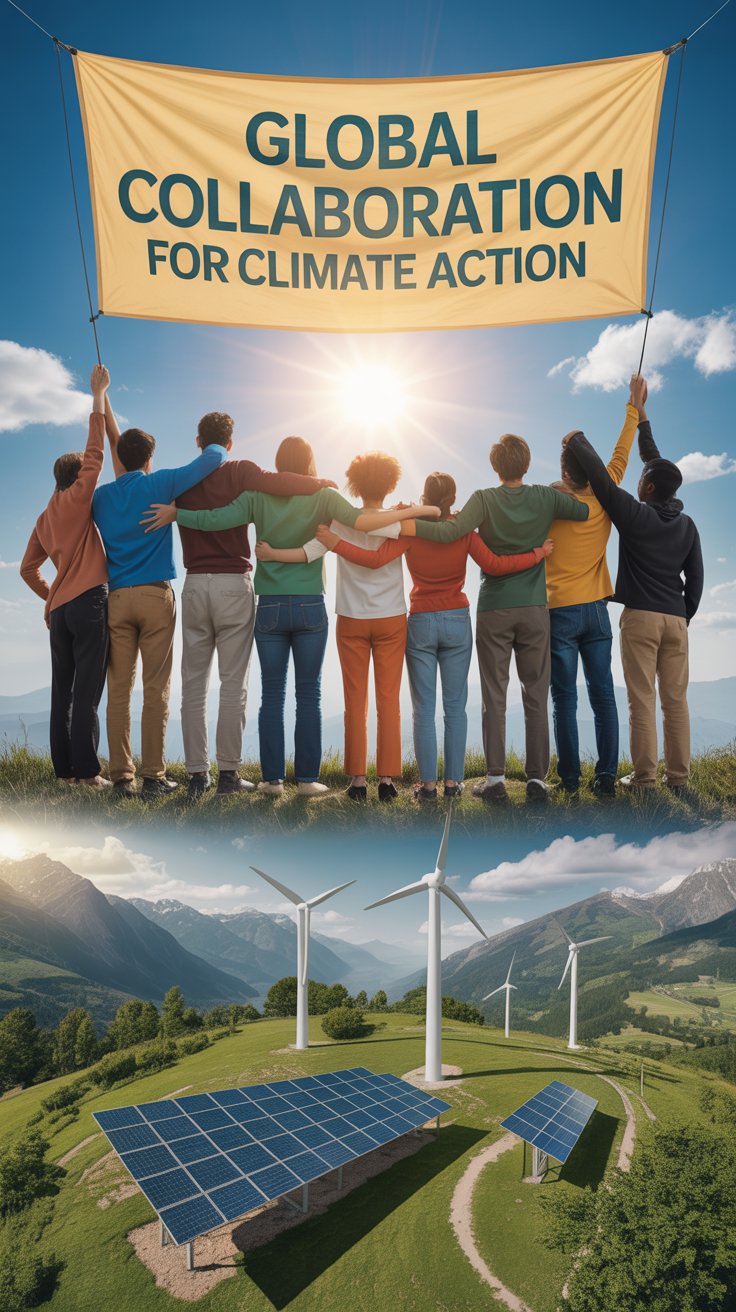The escalating climate crisis demands immediate, collective action. Global collaboration for climate action has become the cornerstone of efforts to combat climate change, enabling countries, organizations, and individuals to work together toward a sustainable future.
This article examines the significance of global collaboration and the key mechanisms that drive it and provides answers to common questions about its impact and implementation.
Collaboration for climate action is essential to effectively address the global climate crisis. By bringing together nations and sectors in a united effort, humanity can create a sustainable path forward and secure a resilient future for generations to come.
Why Global Collaboration for Climate Action is Crucial
Climate change transcends borders, impacting ecosystems, economies, and communities worldwide. No single nation can effectively tackle the complex challenges of global warming alone. Global Collaboration for Climate Action is essential for:
- Shared Responsibility
- Recognizing that climate change affects all countries, collaboration ensures that the burden of mitigation and adaptation is equitably shared.
- Pooling Resources
- Combining financial, technological, and human resources accelerates the development and deployment of climate solutions.
- Knowledge Sharing
- International partnerships foster the exchange of expertise and best practices, driving innovation in sustainable technologies.
- Strengthening Policy Frameworks
- Collaborative efforts lead to the creation of unified policies and agreements, such as the Paris Agreement, to address global emissions.
Mechanisms Driving Global Collaboration for Climate Action
1. International Agreements and Protocols
Agreements like the Paris Agreement and Kyoto Protocol lay the foundation for collective climate action by:
- Setting emission reduction targets.
- Establishing mechanisms for monitoring progress.
- Encouraging accountability among nations.
2. Climate Financing
Financial support is critical for enabling developing countries to adopt sustainable practices. Mechanisms such as:
- The Green Climate Fund.
- Climate Investment Funds. Provide resources to implement renewable energy projects, reforestation, and disaster resilience programs.
3. Technological Cooperation
Sharing cutting-edge technologies ensures equitable access to solutions such as:
- Renewable energy systems.
- Carbon capture and storage technologies.
- Sustainable agriculture techniques.
4. Public-Private Partnerships (PPPs)
Collaborations between governments and private enterprises drive innovation, investment, and scalability of climate solutions.
5. Grassroots and Community Engagement
Engaging local communities ensures that climate actions are inclusive and culturally sensitive, amplifying their impact.
Key Areas of Focus in Collaboration for Climate Action
1. Renewable Energy Transition
Collaborative efforts are accelerating the global shift to clean energy sources like solar, wind, and hydropower, reducing dependence on fossil fuels.
2. Deforestation and Reforestation
Joint initiatives aim to:
- Combat illegal logging.
- Restore degraded lands through tree planting.
3. Sustainable Agriculture
Developing climate-resilient farming practices ensures food security while reducing greenhouse gas emissions.
4. Marine and Coastal Conservation
Protecting marine ecosystems through global agreements addresses issues such as ocean acidification and overfishing.
5. Climate Education and Awareness
Educational programs and campaigns empower individuals to contribute to climate action, fostering a culture of sustainability.
Challenges in Global Collaboration for Climate Action
- Political and Economic Barriers
- Differing national priorities and economic interests often hinder collective decision-making.
- Inequitable Resource Distribution
- Ensuring fair access to funding and technology remains a persistent challenge.
- Lack of Accountability
- Monitoring and enforcing commitments made under international agreements require robust mechanisms.
- Public Resistance
- Misinformation and skepticism about climate science can undermine collaborative efforts.
FAQ
What is the Paris Agreement, and how does it promote global collaboration?
The Paris Agreement is a landmark international treaty adopted in 2015. It aims to limit global warming to below 2°C, preferably to 1.5°C, through nationally determined contributions (NDCs) and collaborative mechanisms.
How does global collaboration address climate change in developing countries?
Through climate financing and technology transfer, developed nations support developing countries in adopting sustainable practices and building resilience against climate impacts.
What role do individuals play in global collaboration for climate action?
Individuals contribute by:
Advocating for policy changes.
Reducing their carbon footprint.
Participating in community-driven sustainability projects.
Why is technological innovation vital for global collaboration?
Innovation provides scalable solutions for renewable energy, carbon reduction, and climate adaptation, enabling all nations to achieve their climate goals more effectively.
What is the future of global collaboration for climate action?
The future lies in strengthening international partnerships, increasing investment in green technologies, and fostering grassroots engagement to create a unified global response to climate change.




Leave a Reply